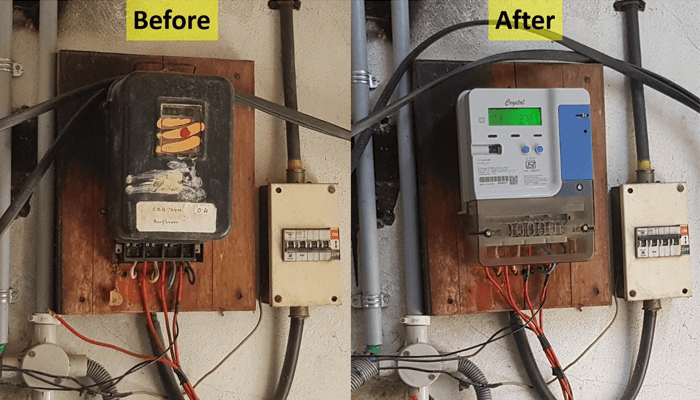International Institute of Information Technology Hyderabad (IIITH) has replaced all traditional energy meters with state-of-the-art IoT enabled devices on campus. While such a large scale deployment on an academic campus is unprecedented in itself, what is even more novel is that the meters are based on the next-gen LoRaWAN communication protocol. With over 80 energy meters, this is a one-of-a-kind deployment of such a scale in the country.
LoRaWAN is a Long Range low power Wide Area Network, developed by Semtech as a communication standard for IoT networks. It allows the transfer of information at low power over a wide range, thus forming a basis for cost-effective, long-range and power-efficient sensor systems.
“The range covered by a single LoRaWAN gateway is about 100 times more than Wi-Fi. While each WiFi access point can cover a range of 100 or 200 meters, a single LoRaWAN gateway can cover 10+ km,” explains Dr. Aftab Hussain who is spearheading the deployment of LoRaWAN on campus.
The 80 new 3-ph energy meters on-campus help in monitoring the energy, pf, voltage, current, peak demand for all phases. The data is transmitted at 15-minute intervals to a network server through LoRaWAN, decrypted, and archived using the OneM2M (Machine to Machine) standard. OneM2M is a global standards initiative that covers requirements, architecture, API specifications, security solutions, and interoperability for machine-to-machine and IoT technologies.
Thanks to the LoRaWAN network, IoT devices can be deployed anywhere on campus. “If you have a sensor node based on Arduino, you can ask it to communicate through a LoRaWAN transceiver with the network on campus. The transceiver can also be attached to anything, making the development and deployment of LoRaWAN-based sensors convenient” says Dr. Hussain.
One such planned project of the smart campus initiative deals with monitoring water quality in the overhead tanks. With the help of sensors for detecting PH, turbidity, salinity, conductivity, and temperature, water quality can be continuously monitored and the data collected from the sensors will go via LoRaWAN to the cloud. While the energy meters were industrially manufactured and procured, the setup for monitoring water quality will be made completely in-house by the students.
Interestingly, IIITH is serviced with LoRaWAN connectivity through two different network providers, also a first of its kind for an academic campus in the country.
“Having two different networks operational on the campus provides flexibility in deployment, particularly when large amounts of sensors and data are to be supported. I believe the data generated will give a boost to our efforts in AI/ML as well. I am sure the analysis of such high-resolution energy data can provide interesting insights in the future,” says Dr. Hussain.
